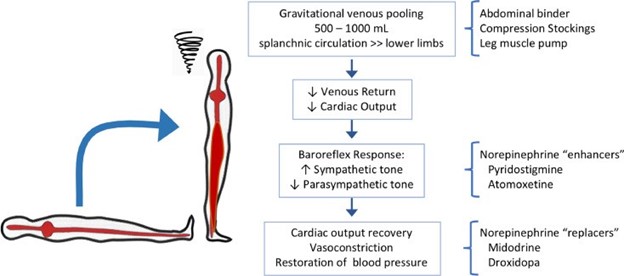A nurse inadvertently administers 160 mg of valsartan PO to a client who was scheduled to receive 80 mg.
Which of the following actions is the priority for the nurse to take?
Monitor the client’s urine output
Check the client for nasal congestion
Evaluate the client for orthostatic hypotension
Obtain the client’s laboratory results
The Correct Answer is C

Nursing Test Bank
Naxlex Comprehensive Predictor Exams
Related Questions
Correct Answer is A
Explanation
The correct answer is A. Increase dietary calcium. Prednisone is a corticosteroid medication that can cause bone loss (osteoporosis) by reducing the absorption of calcium and increasing the excretion of calcium in the urine. Therefore, patients taking prednisone should increase their intake of calcium-rich foods or supplements to prevent bone loss and fractures.
Choice B is wrong because prednisone can cause weight gain, not weight loss, by increasing appetite and fluid retention. Patients taking prednisone should monitor their weight and limit their salt and calorie intake.
Choice C is wrong because prednisone should not be taken on an empty stomach, as it can cause stomach irritation, ulcers, or bleeding. Patients taking prednisone should take it with food or milk to protect their stomach.
Choice D is wrong because prednisone should not be scheduled at bedtime, as it can cause insomnia or difficulty sleeping. Patients taking prednisone should take it in the morning or early afternoon to avoid disrupting their sleep cycle.
Correct Answer is A
Explanation
The correct answer is choice A. Implement firm but flexible boundaries in their relationship.
This is because boundaries can help the client and family to respect each other’s roles, needs and preferences, and to avoid role confusion, resentment or guilt. Boundaries can also promote independence and self-care for the client, as well as prevent caregiver burnout for the family.
Choice B is wrong because minimizing open discussion regarding the changes can lead to misunderstanding, frustration or isolation. The client and family should communicate openly and honestly about their feelings, expectations and challenges, and seek support when needed.
Choice C is wrong because authoritative communication from the adult child can create a power imbalance, undermine the client’s autonomy and dignity, or cause conflict or resistance. The client and family should use respectful and collaborative communication, and involve the client in decision-making as much as possible.
Choice D is wrong because decreasing socialization with extended relatives can reduce the client and family’s support network, increase their stress or loneliness, or limit their opportunities for meaningful activities. The client and family should maintain contact with their relatives and friends, and participate in social or recreational activities that they enjoy.
Whether you are a student looking to ace your exams or a practicing nurse seeking to enhance your expertise , our nursing education contents will empower you with the confidence and competence to make a difference in the lives of patients and become a respected leader in the healthcare field.
Visit Naxlex, invest in your future and unlock endless possibilities with our unparalleled nursing education contents today
Report Wrong Answer on the Current Question
Do you disagree with the answer? If yes, what is your expected answer? Explain.
Kindly be descriptive with the issue you are facing.
